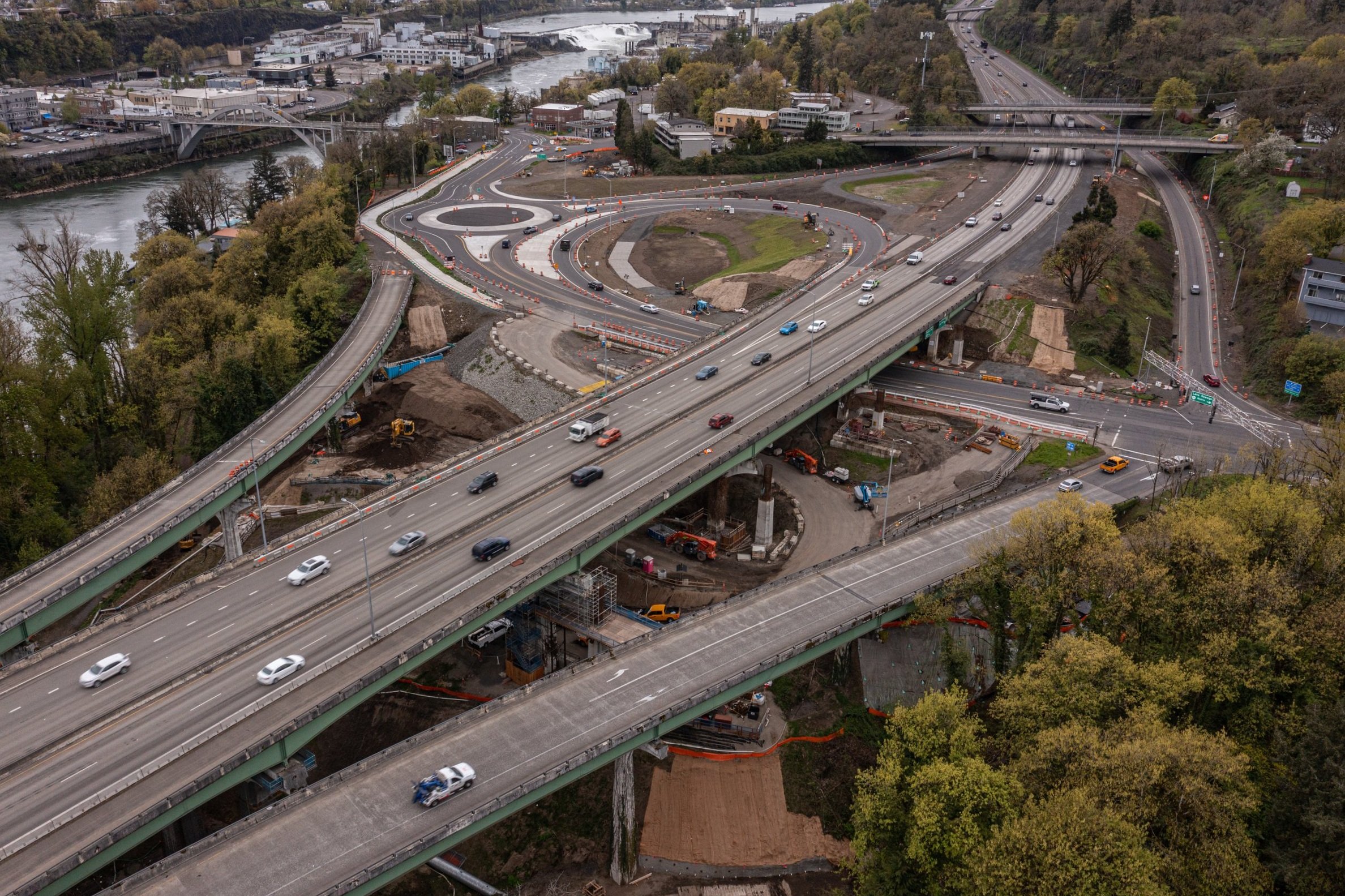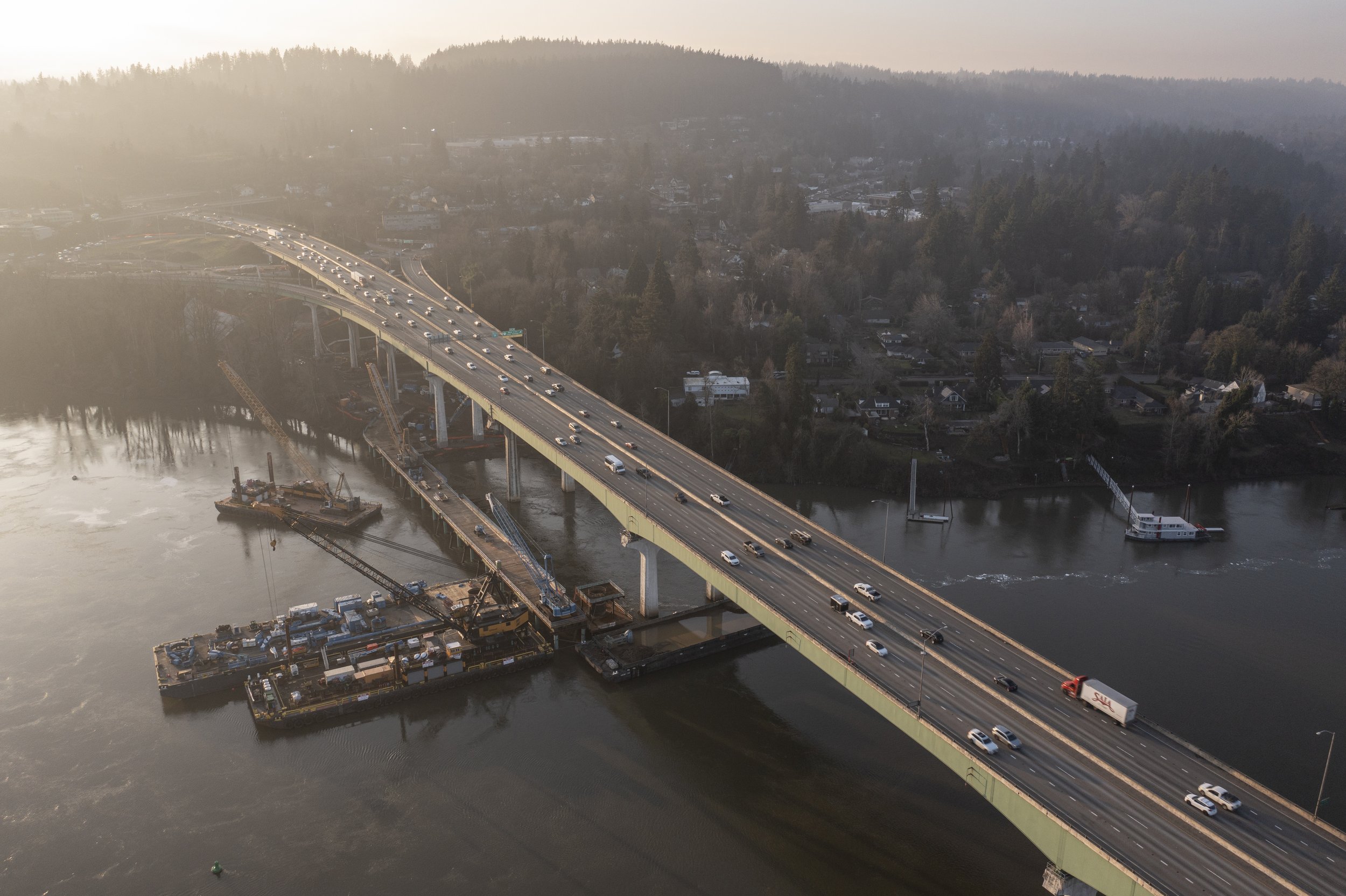
News items
Building an Earthquake-Ready Abernethy Bridge
Just a few miles south of Portland, the Abernethy Bridge is a critical link across the Willamette River between Oregon City and West Linn on I-205. Learn how our engineers have designed the Abernethy Bridge improvements to withstand a Cascadia Subduction Zone quake.
Just a few miles south of Portland, the Abernethy Bridge is a critical link across the Willamette River between Oregon City and West Linn on I-205. It is being retrofitted to withstand a significant earthquake to ensure the bridge is safe when needed. Once the improvements are completed, it will be designated a “lifeline route” for the metro region and the State of Oregon, which means that planners intend to move equipment, materials, and first responders along this stretch of I-205 in the aftermath of a major natural disaster.
Soil can move and flow like water during a major earthquake, whereas the bedrock deep beneath the surface won’t move, even during prolonged shaking. To ensure the Abernethy Bridge remains standing even if the ground around it is flowing into the river, every bridge support is being strengthened or replaced.
Some supports outside the river will be strengthened by adding piles and strengthening the existing footings, columns, and crossbeams that hold up the bridge. Supports located in the river and those on the adjacent banks must be replaced entirely because the depth of bedrock and the severity of their weaknesses make them impossible to reinforce sufficiently. New supports consisting of concrete-filled steel casings up to 12 feet in diameter at these locations extend down over 200 feet into the bedrock. These foundations are the largest in the western United States and require new, larger equipment that had to be specially manufactured for the job. The new supports will also have new columns and crossbeams that span beneath the bridge to hold it up.
In addition to the strengthened bridge supports, engineers needed to update the bridge deck to withstand the shaking associated with a Cascadia-level earthquake. To do this, they will install seismic isolation bearings under each girder and every support—nearly 400. These will allow the bridge deck to remain in place while the foundations move independently during an earthquake.
Even with the stronger supports and seismic isolation bearings, the bridge would still be unable to withstand the expected magnitude of a Cascadia quake because of the severe ground movement around the bridge supports. To address this, contractors will use a process called “grouting” to stabilize the soil around some of the bridge supports. “Grouting” is a process that involves injecting concrete into the ground to reduce the amount of movement during an earthquake.
Taken together, the magnitude of the expected earthquake, the condition of the current bridge, and the anticipated ground movement in the area created an unusual set of circumstances for our engineers to overcome. When complete, the improvements to the Abernethy Bridge will ensure it can serve as a lifeline route when our communities need it the most.
The seismic upgrades and other improvements happening to the Abernethy Bridge do not impact access to the river, nor does this work prevent fishing on the Willamette River.
Please sign up for text messages and email alerts to stay informed of road closures, detours and other impacts, or visit TripCheck. You can also follow ODOT's Facebook, Instagram, and Twitter for updates on the I-205 Improvements Project.



